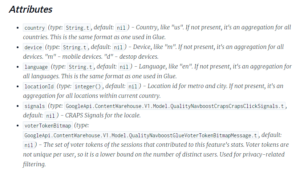Content is essential for generating organic traffic because it plays a huge role in SEO. It allows your business to target more keywords and generate backlinks, and content can also be shared on social media to increase engagement. But producing enough content of a high enough value is no mean feat. Smaller businesses especially may struggle to keep up a regular posting schedule, and as a result, the whole content strategy may suffer.
One option is to turn to user-generated content (UGC). This is content that is created not by your business but by your customers and target audience. While you won’t want to use UGC exclusively, it can certainly make up a portion of your content.
Here’s what you need to know to get started.
Why Use UGC?
There are a number of key benefits of using UGC on your website and social platforms. The main advantages are:
- It’s fast – you don’t have to spend time creating the content yourself because someone else is doing the work for you.
- It’s free – you are not paying for the content, at least not in the standard form you might pay a writer to create it for you.
- Target more keywords – your customers will use keywords and keyword phrases that you have not even thought of, allowing you to target more keywords on your website.
- A constant source of new content – go about it properly, and you can generate a consistent source of content for your website (Google likes websites that are refreshed regularly).
- Generate engagement – your customers become more involved in your brand when they are actively contributing content.
Main Types of UGC
There are many ways that you can make use of UGC on your website and on social media. You can focus on one of these, or you may choose multiple options. Here are some of the main ones to consider.
Launch Competitions and Giveaways
One of the best ways to make use of UGC is to launch a competition on social media. This could involve asking people to send in an image, video, a story or something else in order to participate.
If you sell products, you may want to launch a competition asking applicants to upload photos of themselves using your product, along with your competition’s unique hashtag. Make it fun, humorous and memorable to generate more interest on social networks.
Competitions like this are a great way to generate buzz and boost your social following, generating more leads for your business.
Ask for Product Reviews
Product reviews are a classic form of UGC, and they have a number of benefits. For a start, they provide a powerful form of social proof. Not only do shoppers trust them more than your own marketing, but they now expect to find them and they will often want to read product reviews before they buy something. But there is another benefit to product reviews.
The language that your customers use is natural language that other customers are familiar with. This means it will contain lots of long-tail keywords that you may never have thought of adding to your website to enhance your discoverability.
Where should you place these reviews? Ideally on every product page. That way, when people find a product on your store, they are given the nudge they need to make the purchase.
Ask your customers for reviews in follow-up emails, and provide them with a link to where they can leave their review to make it as easy as possible. Keep doing this over time and you’ll soon start to build up more reviews for your site.
Ask for Image and Video Reviews
As well as standard written reviews, ask for image and video reviews from your customers. People love images and videos, and these will help to take your product reviews to a new level.
They also add authenticity. A customer showing how they use your product is more genuine than a written review, making it more persuasive. Videos are especially effective because your customers must go to greater lengths to create them.
Don’t worry about the quality. In fact, it may be more effective if they are not too polished because otherwise, they will look like your own marketing material rather than genuine reviews.
Provide tips to customers about the types of images and videos that work best, such as a short video discussing what they love about the product or unboxing the product.
Use them on the product pages again, but also upload them to YouTube and use them in your blog posts.
Ask for Testimonials
Testimonials are similar to product reviews, and they often work best for service-based businesses. They work in the same way as product reviews in that they provide social proof, so new visitors to your site can see what other customers say about you.
Ask your customers for testimonials – especially customers you have had a good experience with. Then add the testimonials to your home page and your blog posts. They will not only be persuasive, but they will also provide a great source of free content that is optimised for keywords.
Request Guest Blog Posts
Guest blogs are another excellent way to generate a consistent source of content for your website. You may already be familiar with these. They are where you encourage people to submit content to be published on your blog.
You may want to pay for them, but more often than not payment comes in the form of a backlink to the author’s website. They get a link; you get free content.
It’s a great option for publishing more unique content on your website more frequently. Even if you publish as frequently as once a week to your blog, having an extra weekly post can make a big difference – it could even double or triple the amount of content you publish.
Obviously, you don’t want to accept any old content has to be high quality. So create a set of standards and publish it on your site. Include the topics you will cover, the minimum length of the content (1,000 words is average), your policy on links, that the content must be unique and not published anywhere else.
You should also encourage authors to share their posts once they are published and to respond to comments left by readers.
Questions and Answers
You could also create a Q&A page, which is a great way to get more content on your website. Encourage your customers to post their questions, and have a system where you approve and then publish them. You can then answer the questions yourself or encourage other customers to answer them.
Once again, the questions are likely to include long-tail keywords, and the question format is especially useful for SEO now that many people search using voice search.
Create a Forum
You could even take the Q&A one step further and launch your own forum. As long as you have enough activity to make it worthwhile and you have the time to moderate it, it could be a great option.
Again, you get lots of content for free, and you can also drive more visitors via the search engines. In addition, it will help to build a sense of community around your brand.
Use UGC to Your Advantage
These are a few of the simplest ways to use UGC on your website. They will all take a bit of work on your part to set up and monitor, but once you start generating content from visitors and customers, you can enjoy a regular source of keyword-optimised content.
This will help to drive more traffic to your website, generate more buzz and boost trust in your brand.



